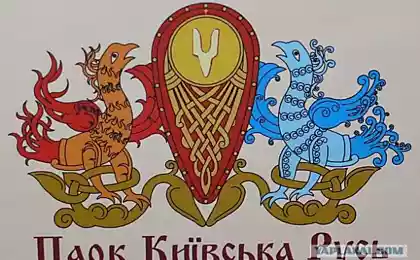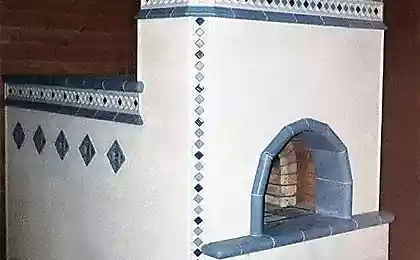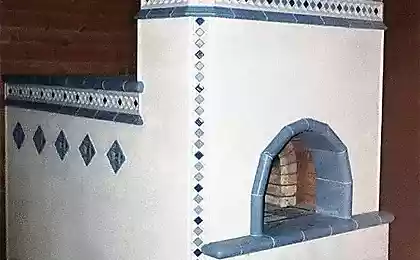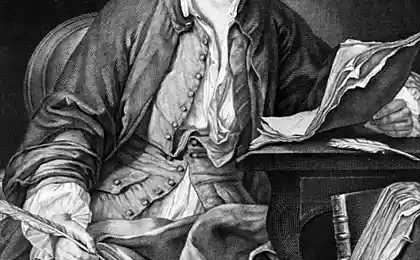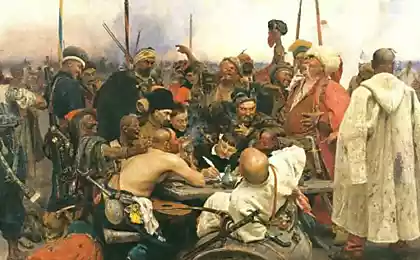1837
Forgotten Crafts Russian land
I want to tell you about the crafts of our ancestors, who have long gone. It is now a lot of machines and tools to facilitate the work, and before everything was done by skilled calloused hands.
1. Cooper.
Cooper by ax and other woodworking tools dowel barrels adjusts to each other, their vystrugivaet makes folds (zautory) zautornikom in them drives the bottom and everything connects wooden or iron obruchami.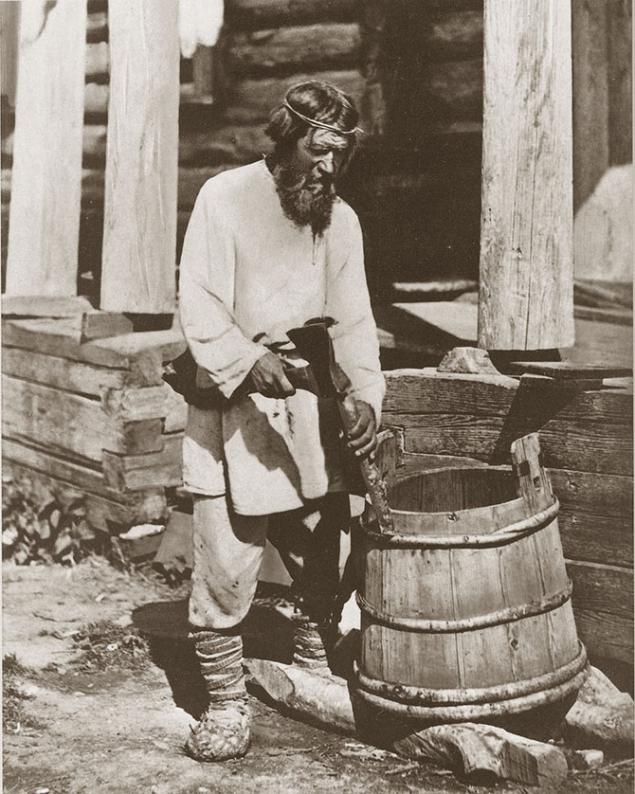
2. Shoemaker.
Occupation shoemaker has created many phenomena of contemporary culture, for example, saying "shoemaker without shoes" (which describes a situation where a professional in any field in vain does not use its own ability for personal use). Cobblers also called repairmen obuvi.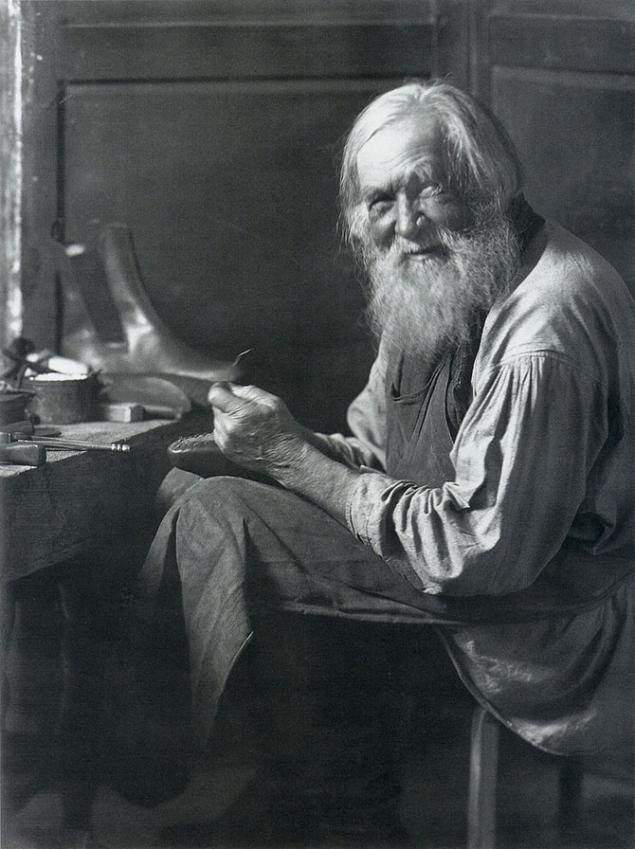
3. Lapotnikov
Shoes, and under a different name "Lychak" were also common y Belarusians, Karels, Mordovians, Tatars, Finns, Estonians, Chuvash. A similar kind of shoes used and the Japanese and North American Indians, and even Australian aborigeny.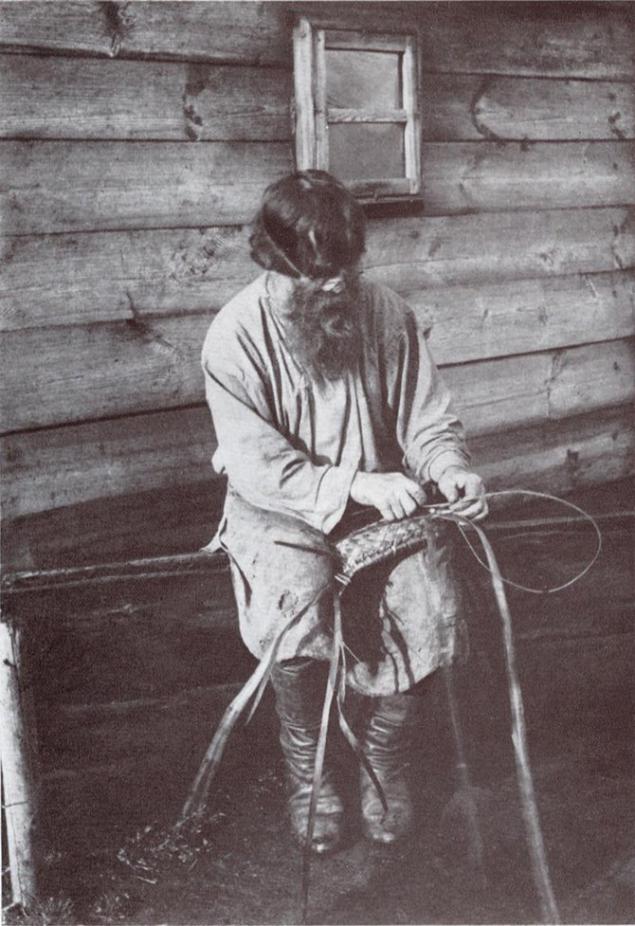
4. weavers
Artisan is made wicker products from the vine: Utensils and containers for various purposes, such as boxes, baskets, vases, et al., Furniture (tables, chairs, chests, cradle), and others. Under the vines means any natural material of plant origin, capable at a certain processing easily bend, and in normal conditions to keep formu.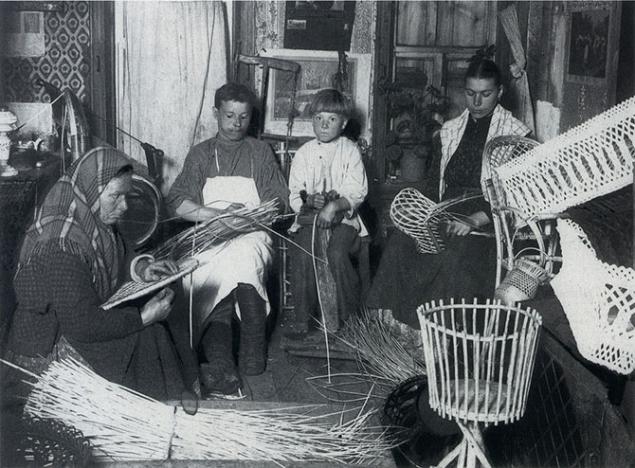
5. Carpenter.
Professional worker, craftsman, artisan, who works with wood, machined and manufactured wood products or products on wooden osnove.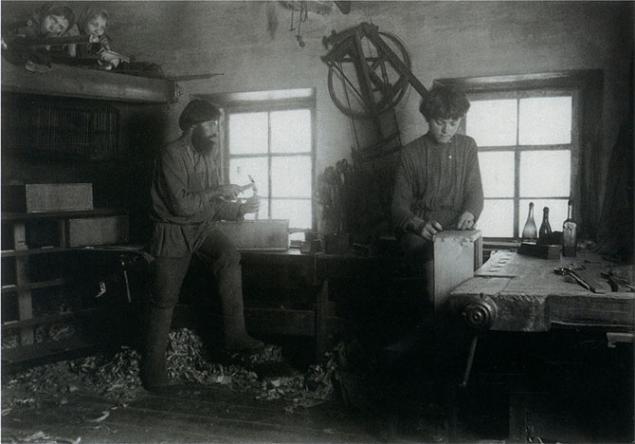
6. Gonchar.
First pottery was a craft that served to prepare the vessels for food or to save the liquid and granular materials; but eventually developed and enriched with new items manufacture, namely, refractory bricks, stone ware, tiles, tiles, drainage pipes, architectural ornaments and similar izdeliyami.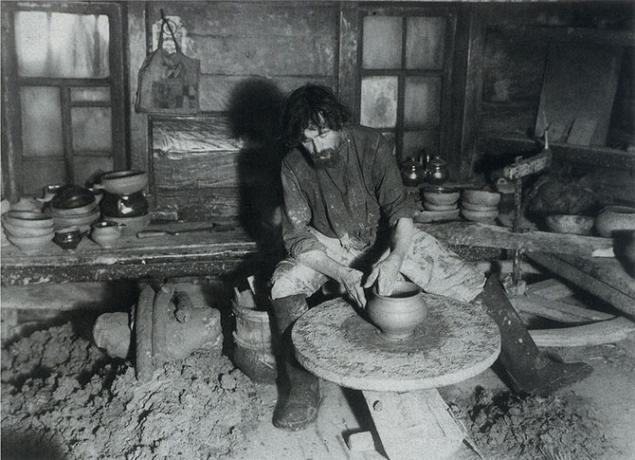
7 Lozhkarev.
Wooden spoons in Russia in the XIX century. were made in an amount not less than 150 million units (over $ million) a year. Material for spoons are: aspen, birch, alder and rowan part and only occasionally maple and palm (boxwood), and in the western provinces and the Caucasus - pear.
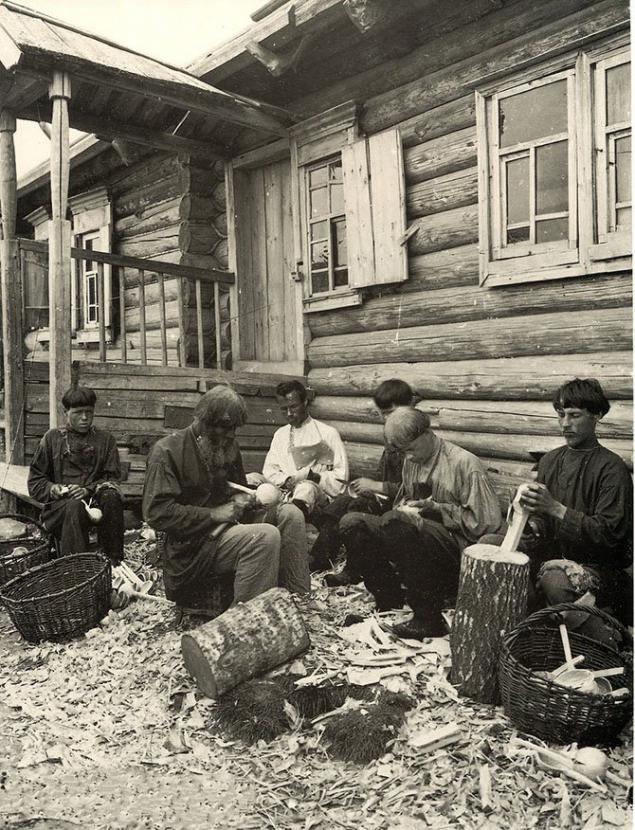
8. Toy.
Master toys are made of different materials. In Russia, they are carved out of wood, clay or clung trailed from solomy.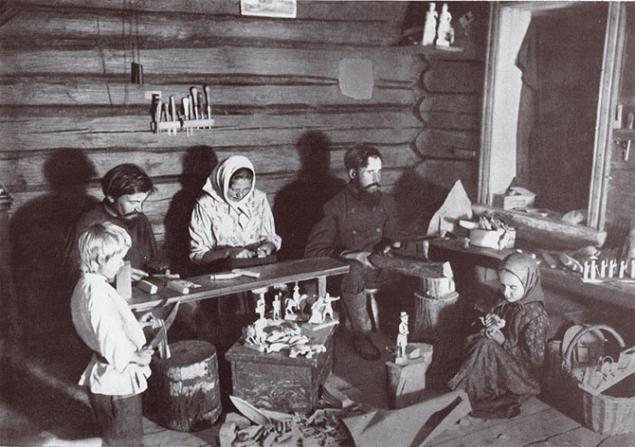
9. Dyer.
Craftsman engaged color yarn, fabrics, leather and so on. P.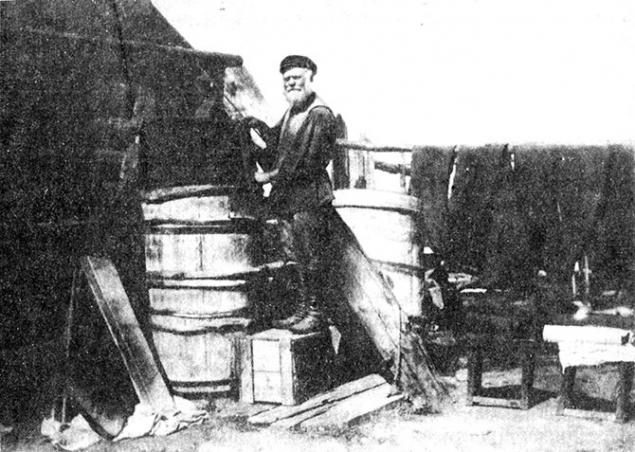
10. fuller.
Boots - shoes traditional peoples of Eurasia, which is used to walk on dry snow. To slow the wear and tear boots hem leather or rubber soles and wear galoshes. Traditionally, the boots are brown, black, gray, and white, but in recent years has produced a variety of colors boots. The prototype of the boots were traditional felt boots Eurasian nomads ("Pima"), the history of which has more than 1, 5 thousand let.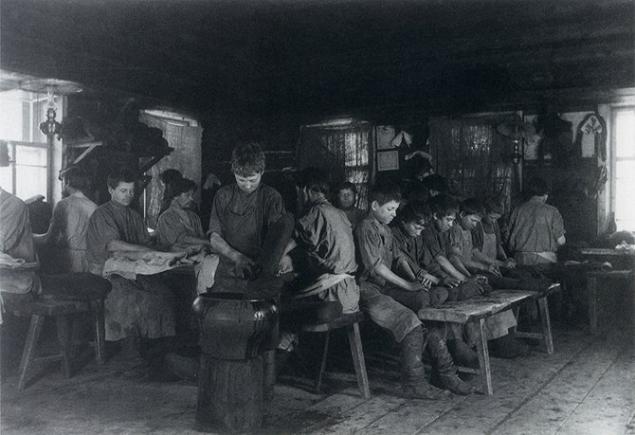
11. Weaver.
To 19-20 centuries. Weaving is one of the most common home occupations in the traditional cultures of the peoples of Russia and adjacent territories. Used mainly in the production of flax and hemp (t. N. Hemp) canvas for underwear garments, cloth for clothing, as well as belts and finishing tape. With the process of tissue, especially with the responsible steps and start cutting the finished product (for example, strips of canvas), is related to many beliefs and primety.
12. Embroideress.
A passion for decorating themselves and their clothes in order to stand out with something from the environment inherent to human nature, even in the primitive, semi-wild state it; For example, the Red Indians blankets adorn various embroideries; Lapp on their clothes from buckskin embroider a variety of patterns. Embroidery was known in ancient times, and like many other branches of art and science, it was the cradle of the East. In Asia, this art flourished already widely to much earlier than it became known to the Greeks and Romans, although the Greeks attributed the invention of embroidery Minerva, Athena-Pallade.
13. Spinning Wheel.
Distaff accompanied the girl from birth to marriage. Eastern Slavs newborn girls cut the umbilical cord at distaff or spindle; through the spinning wheel transferred to the infant godmother; put a spinning wheel in the cradle of the girls. Personally signed by the spinning wheel did not lend, or was thought to be a fire or bees die. The Russian North man who wrote on his distaff girls name, had to marry her. Usually the groom gave the girl a new, made and decorated their own hands pryalku.
14. Lace mistress
In Russia, created Bobbin lace in three different ways on technology, namely numerical, Man and coupling. For the manufacture of lace necessary equipment: bobbins, which is wound thread, roller ("cushion", "drum") and stand, for weaving lace in addition to traditional coupling pins also requires the hook. Most often, the lace is woven on pre-rendered drawing - Skolkov. Modern designers use Russian tradition of lace in their kollektsiyah.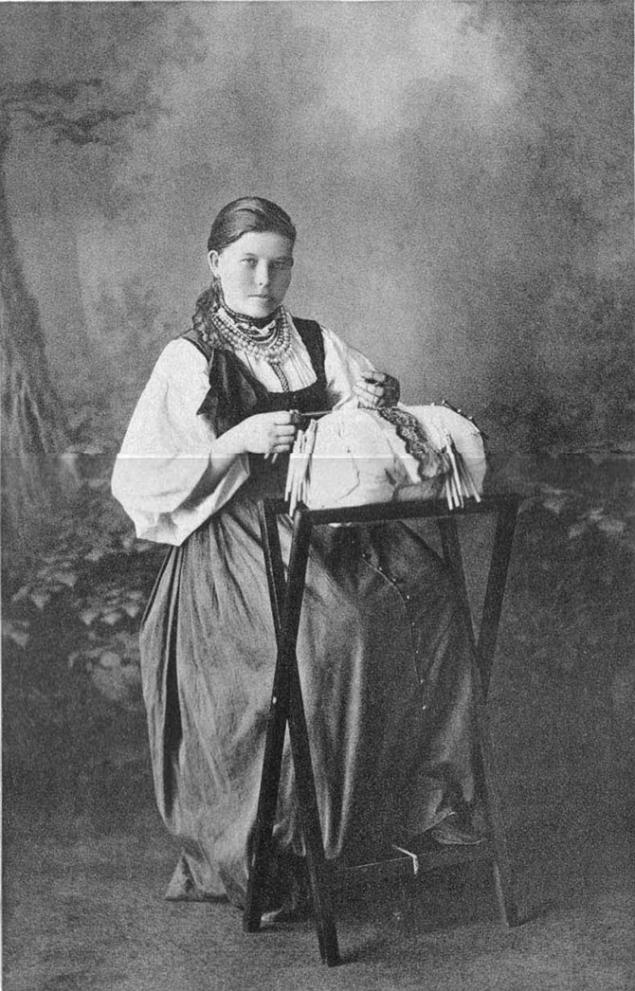
15. handicraftsmen.
Cottage industry - small-scale production of products with the use of manual labor. Handicraft production method used by humans since ancient times. Originally craftsmen set out to meet the needs of its own economy, but with the development of commodity-money relations growing number of manufactured goods was delivered to the market. Mostly it was the household products: glassware, furniture, jewelry, souvenirs, clothes, shoes. However, over time the market began to arrive, and other products, such as oruzhie.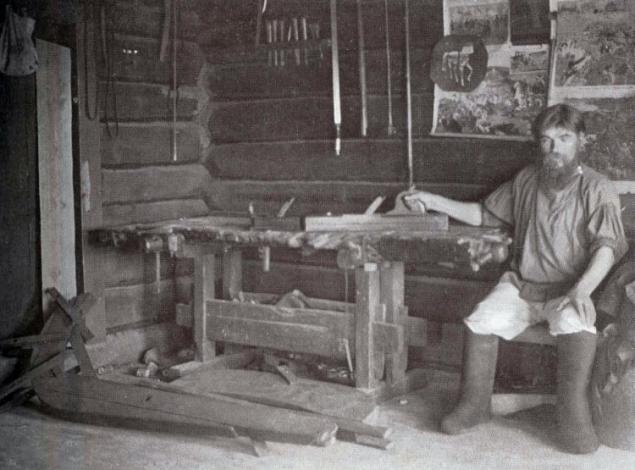
16. Plowman.
Plowman - a person engaged in plowing the land for the needs of zemledeliya.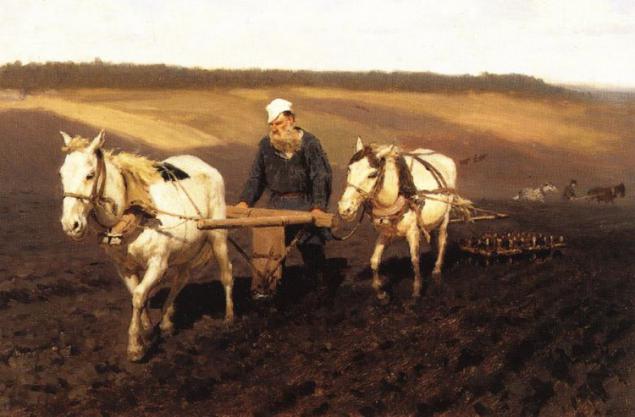
17. Smith.
Blacksmithing - one of the oldest. Blacksmith earlier than other masters, had to give up to do other things (for example, at the same time to plow, stitch, subsistence farming, and so on) and to concentrate fully on his employment, requires a rather complicated processes. Other farmers (or nomadic) it was not always clear, and it seemed mysterious. In addition, due to the risk of fire blacksmiths usually settled in the suburbs, which generated additional zagadochnost.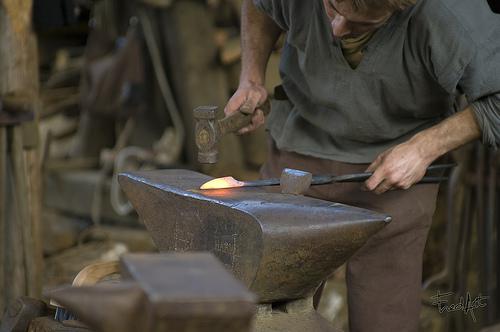
1. Cooper.
Cooper by ax and other woodworking tools dowel barrels adjusts to each other, their vystrugivaet makes folds (zautory) zautornikom in them drives the bottom and everything connects wooden or iron obruchami.

2. Shoemaker.
Occupation shoemaker has created many phenomena of contemporary culture, for example, saying "shoemaker without shoes" (which describes a situation where a professional in any field in vain does not use its own ability for personal use). Cobblers also called repairmen obuvi.

3. Lapotnikov
Shoes, and under a different name "Lychak" were also common y Belarusians, Karels, Mordovians, Tatars, Finns, Estonians, Chuvash. A similar kind of shoes used and the Japanese and North American Indians, and even Australian aborigeny.

4. weavers
Artisan is made wicker products from the vine: Utensils and containers for various purposes, such as boxes, baskets, vases, et al., Furniture (tables, chairs, chests, cradle), and others. Under the vines means any natural material of plant origin, capable at a certain processing easily bend, and in normal conditions to keep formu.

5. Carpenter.
Professional worker, craftsman, artisan, who works with wood, machined and manufactured wood products or products on wooden osnove.

6. Gonchar.
First pottery was a craft that served to prepare the vessels for food or to save the liquid and granular materials; but eventually developed and enriched with new items manufacture, namely, refractory bricks, stone ware, tiles, tiles, drainage pipes, architectural ornaments and similar izdeliyami.

7 Lozhkarev.
Wooden spoons in Russia in the XIX century. were made in an amount not less than 150 million units (over $ million) a year. Material for spoons are: aspen, birch, alder and rowan part and only occasionally maple and palm (boxwood), and in the western provinces and the Caucasus - pear.

8. Toy.
Master toys are made of different materials. In Russia, they are carved out of wood, clay or clung trailed from solomy.

9. Dyer.
Craftsman engaged color yarn, fabrics, leather and so on. P.

10. fuller.
Boots - shoes traditional peoples of Eurasia, which is used to walk on dry snow. To slow the wear and tear boots hem leather or rubber soles and wear galoshes. Traditionally, the boots are brown, black, gray, and white, but in recent years has produced a variety of colors boots. The prototype of the boots were traditional felt boots Eurasian nomads ("Pima"), the history of which has more than 1, 5 thousand let.

11. Weaver.
To 19-20 centuries. Weaving is one of the most common home occupations in the traditional cultures of the peoples of Russia and adjacent territories. Used mainly in the production of flax and hemp (t. N. Hemp) canvas for underwear garments, cloth for clothing, as well as belts and finishing tape. With the process of tissue, especially with the responsible steps and start cutting the finished product (for example, strips of canvas), is related to many beliefs and primety.

12. Embroideress.
A passion for decorating themselves and their clothes in order to stand out with something from the environment inherent to human nature, even in the primitive, semi-wild state it; For example, the Red Indians blankets adorn various embroideries; Lapp on their clothes from buckskin embroider a variety of patterns. Embroidery was known in ancient times, and like many other branches of art and science, it was the cradle of the East. In Asia, this art flourished already widely to much earlier than it became known to the Greeks and Romans, although the Greeks attributed the invention of embroidery Minerva, Athena-Pallade.

13. Spinning Wheel.
Distaff accompanied the girl from birth to marriage. Eastern Slavs newborn girls cut the umbilical cord at distaff or spindle; through the spinning wheel transferred to the infant godmother; put a spinning wheel in the cradle of the girls. Personally signed by the spinning wheel did not lend, or was thought to be a fire or bees die. The Russian North man who wrote on his distaff girls name, had to marry her. Usually the groom gave the girl a new, made and decorated their own hands pryalku.

14. Lace mistress
In Russia, created Bobbin lace in three different ways on technology, namely numerical, Man and coupling. For the manufacture of lace necessary equipment: bobbins, which is wound thread, roller ("cushion", "drum") and stand, for weaving lace in addition to traditional coupling pins also requires the hook. Most often, the lace is woven on pre-rendered drawing - Skolkov. Modern designers use Russian tradition of lace in their kollektsiyah.

15. handicraftsmen.
Cottage industry - small-scale production of products with the use of manual labor. Handicraft production method used by humans since ancient times. Originally craftsmen set out to meet the needs of its own economy, but with the development of commodity-money relations growing number of manufactured goods was delivered to the market. Mostly it was the household products: glassware, furniture, jewelry, souvenirs, clothes, shoes. However, over time the market began to arrive, and other products, such as oruzhie.

16. Plowman.
Plowman - a person engaged in plowing the land for the needs of zemledeliya.

17. Smith.
Blacksmithing - one of the oldest. Blacksmith earlier than other masters, had to give up to do other things (for example, at the same time to plow, stitch, subsistence farming, and so on) and to concentrate fully on his employment, requires a rather complicated processes. Other farmers (or nomadic) it was not always clear, and it seemed mysterious. In addition, due to the risk of fire blacksmiths usually settled in the suburbs, which generated additional zagadochnost.

